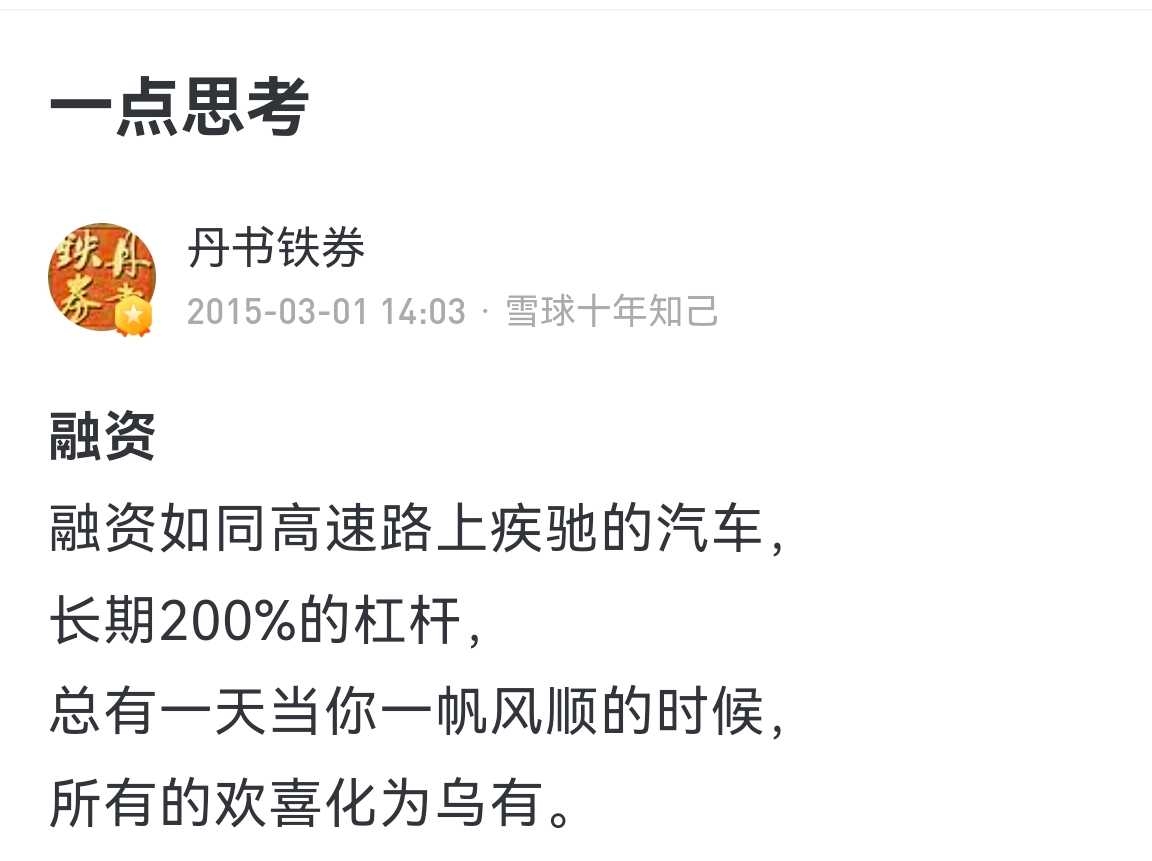Leverage is a double-edged sword. While increasing returns, it also magnifies risks. Several ways of using leverage that I am familiar with:
1. Use high leverage to buy deterministic targets. For example: A public utility stock from 2012 to 2014 (performance from 1 billion to 5 billion, market value from 10 billion to 50 billion). Some friends used leverage to obtain a ten-fold return in three years. This kind of low-risk, high-return, and deterministic target is rare in investment careers, and a good grasp often leads to a higher level of assets.
2. Use margin financing and securities lending accounts to make profits by selling high and buying low. Xueqiu has many successful investors of this type. They have a deep understanding of the company, a good grasp of the market rhythm, and they use low leverage (generally no more than 20%).
3. Use overseas low-interest funds to buy high-yield stocks, and use the interest rate difference to make a profit (3% of financing costs get 10% of dividends). Such investors often have a large amount of funds and have in-depth research on the company. The leverage of such investors generally does not exceed 30%.
4. Use call or put options for arbitrage. Such investors are generally more mature. But it is often prone to unexpected situations in extreme cases.
5. With the idea of getting rich overnight, large-scale, high-leveraged companies with average certainty are bought. The final result is often counterproductive, and there are not a few people whose assets have shrunk sharply or even been cleared.
A little insight into financing after a car accident on the highway seven years ago:

There are 18 discussions on this topic in Xueqiu, click to view.
Snowball is an investor social network where smart investors are all here.
Click to download Xueqiu mobile client http://xueqiu.com/xz ]]>
This article is transferred from: http://xueqiu.com/9742512811/238696974
This site is only for collection, and the copyright belongs to the original author.